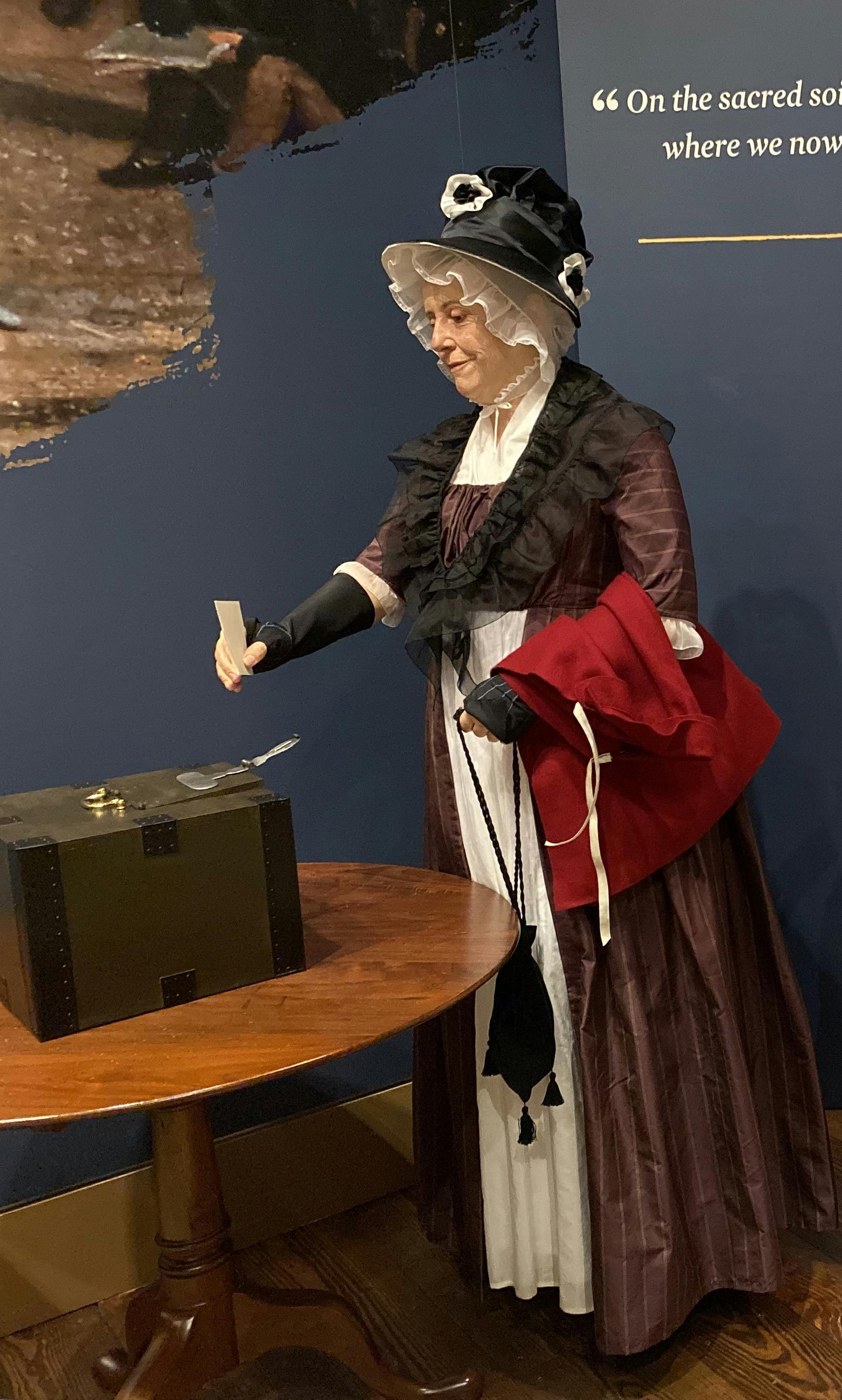
A “Petticoat Elector”
This woman is casting her vote into a ballot box.
She represents an older generation of women whom critics labeled as “petticoat electors” in newspapers of the time. The phrase meant to diminish older women voters as inexperienced in politics and the pawns of male candidates. “Petticoat elector” references a woman’s petticoat, a skirt-like garment covering from her waist to her shoes. Though still a popular garment in 1801, the petticoat was considered old fashioned compared to the neoclassical garments like those worn by the younger woman next to her.
A total of 343 voters cast their ballots in the state election held in Montgomery Township in October 1801. At least 46 of those voters were women, including four women of the VanDike family: Rebecca, Catherine, Ann, and Sarah. The latter three were daughters of an “infamous” Loyalist who fought for George III during the Revolutionary War. Rebecca was the name of both John’s wife and another daughter. Due to the amount of property she controlled, it seems quite possible that Rebecca (the mother of Catherine, Ann, and Sarah) voted in 1801 along with her three daughters. If that is the case, it may be a rare example of a married woman voting, and a demonstration of how the disruption of the Revolutionary War challenged family relationships and the laws of property ownership. This figure in the tableau depicts a woman of Rebecca VanDike’s age. Learn more about Rebecca VanDike.
The ballot box show here is based upon a circa 1811 ballot box from Deptford Township, New Jersey. The box would have met the stringent requirements for ballot boxes listed in New Jersey’s 1797 electoral reform law.
Photograph by Museum of the American Revolution